

With your job experience and a stunning resume layout, recruiters will be ready to give your application the official stamp of approval.
Like this template? Customize this resume and make it your own with the help of our Al-powered suggestions, accent colors, and modern fonts.
A company’s most valuable resource is its employees, but it takes a great human resources manager to find, manage, and help those employees succeed within an organization.
From hiring to onboarding to benefits, you know how to help colleagues succeed within a company. When it comes to being a successful human resources (HR) professional, you put people first. But although you can spot a great resume from a mile away, building a resume of your own is an entirely different beast.
Our HR resume examples and guide have helped HR professionals learn how to write a resume and make a cover letter to land highly coveted jobs with companies like Facebook and Lyft. Writing an amazing human resources resume has never been easier!


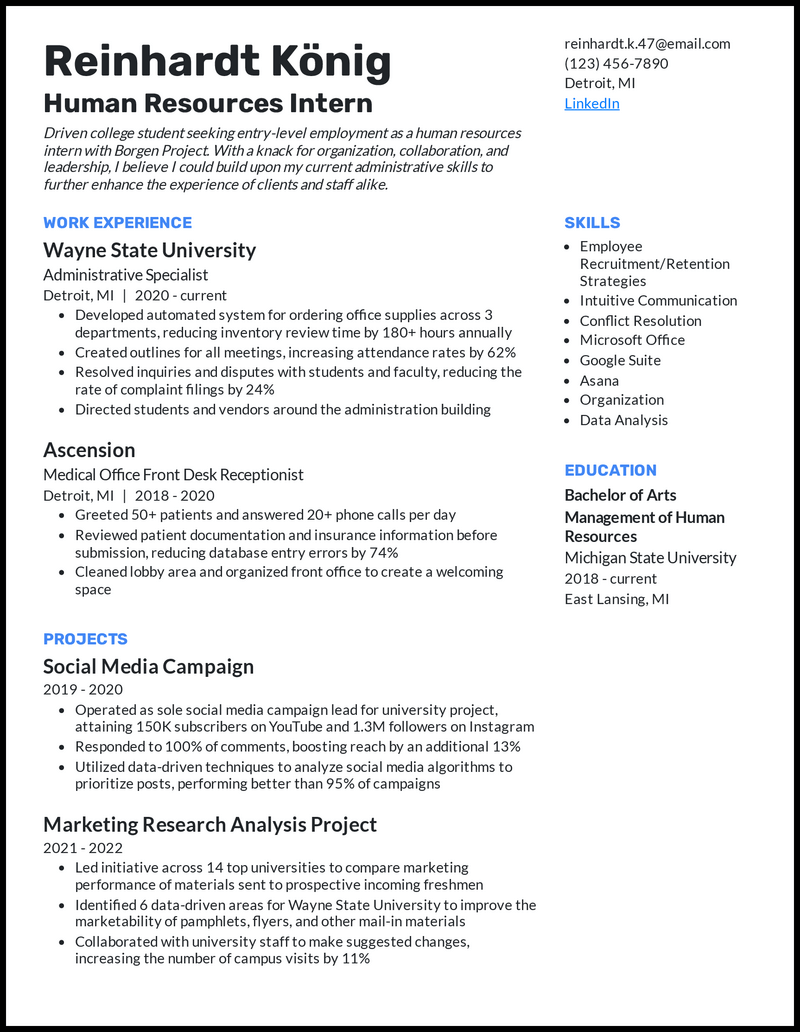
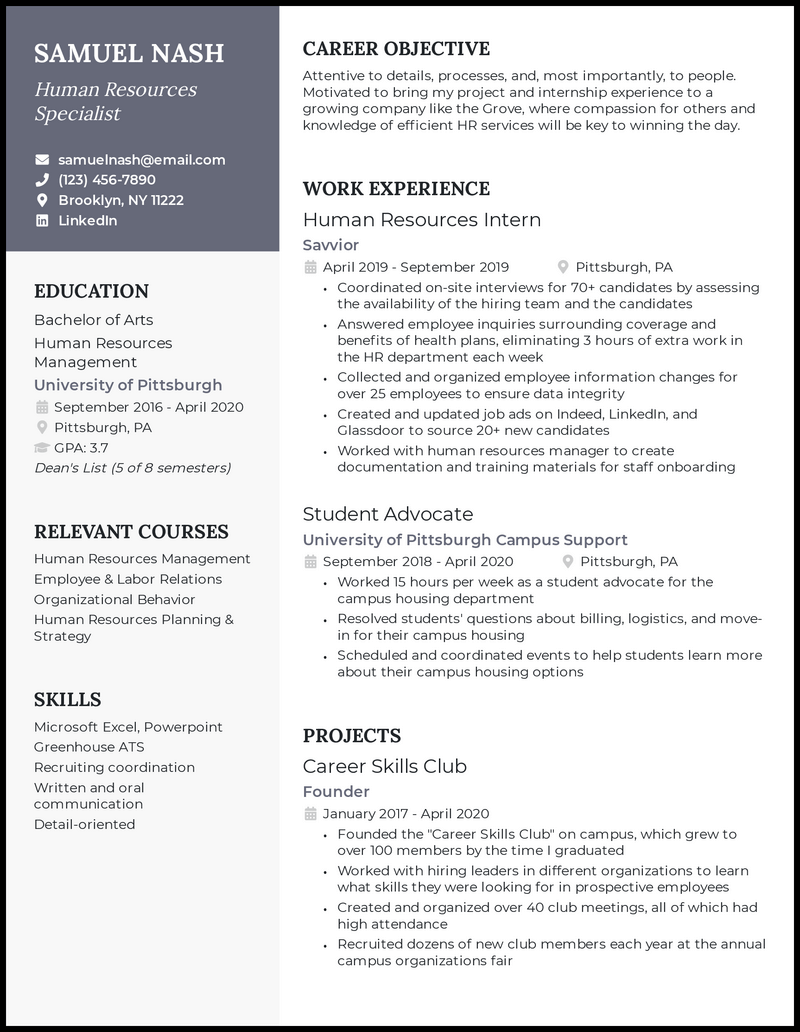
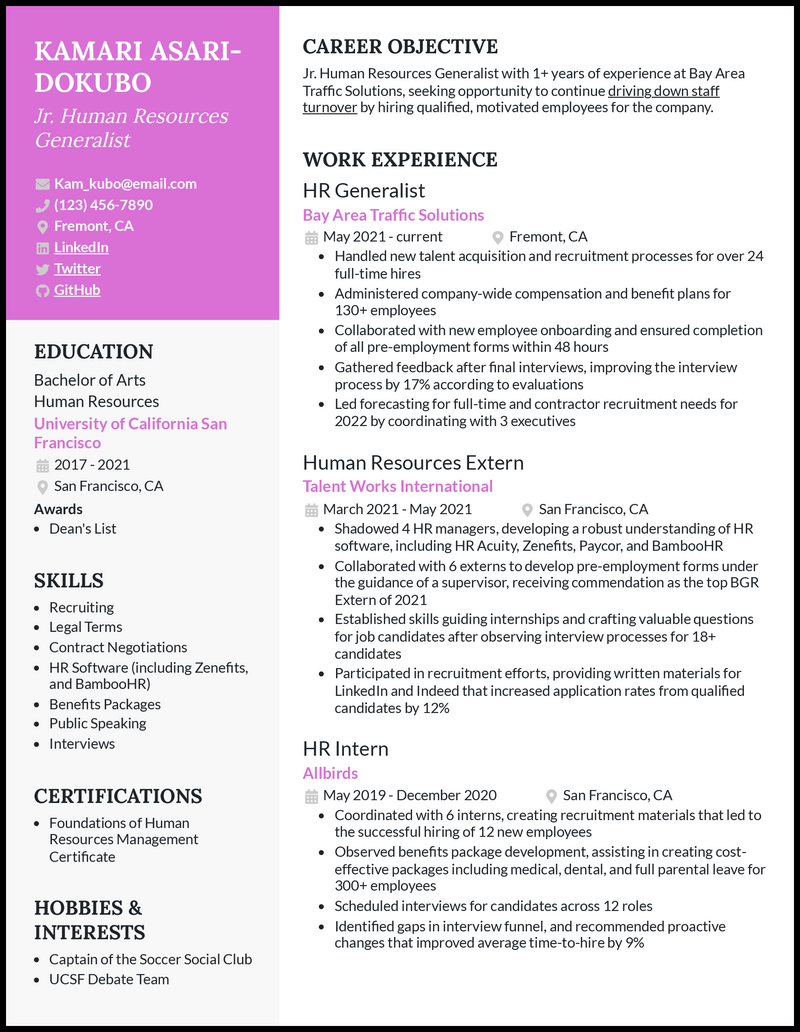
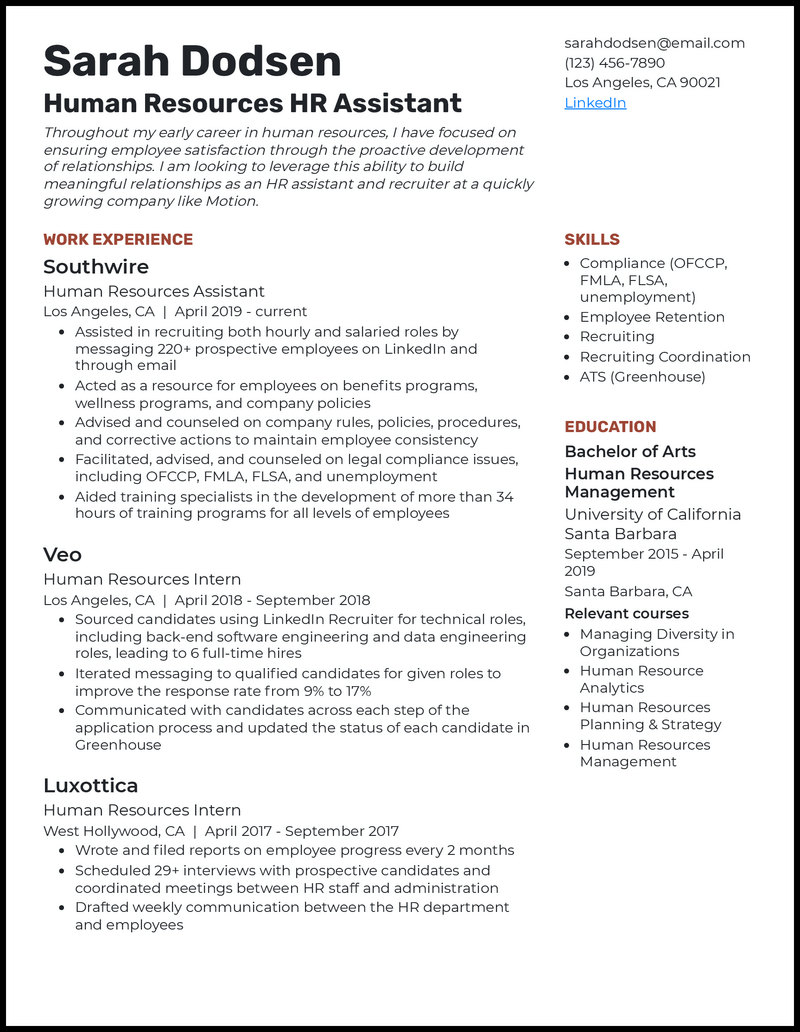






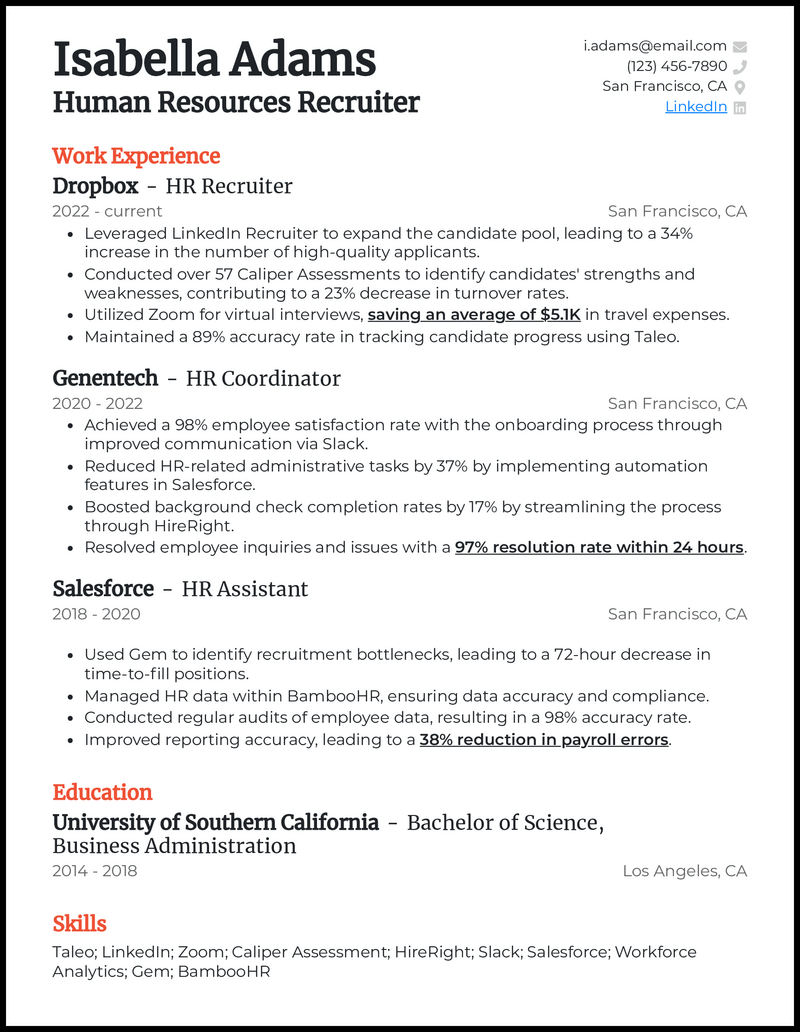

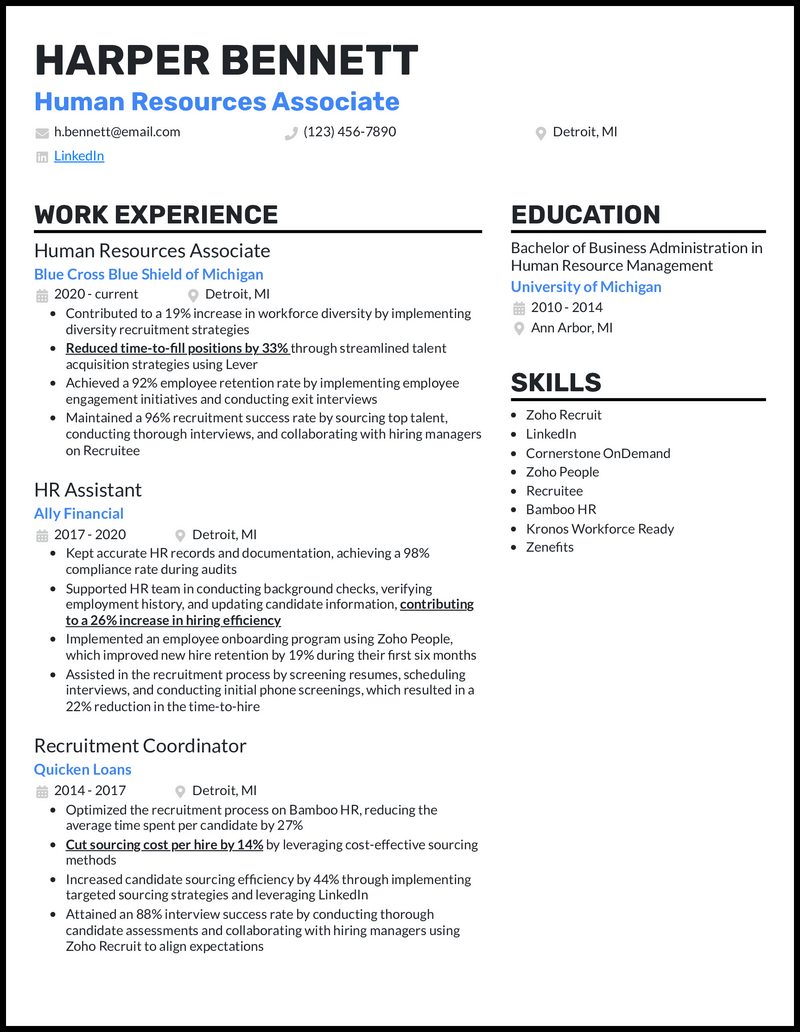
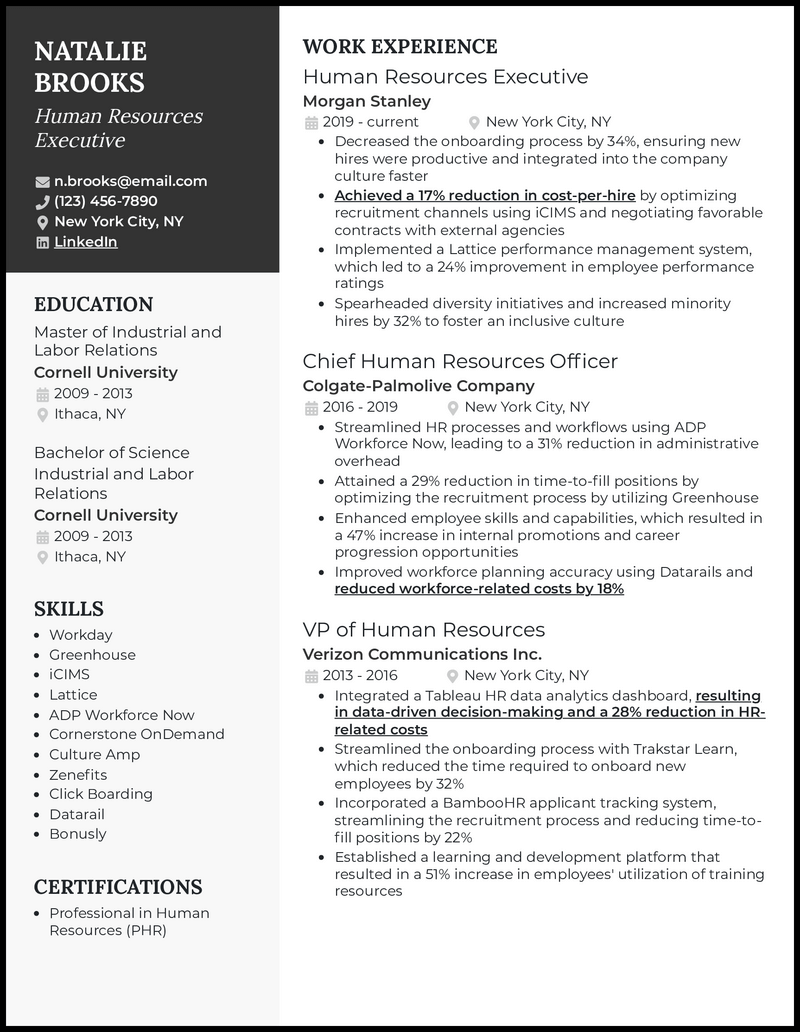




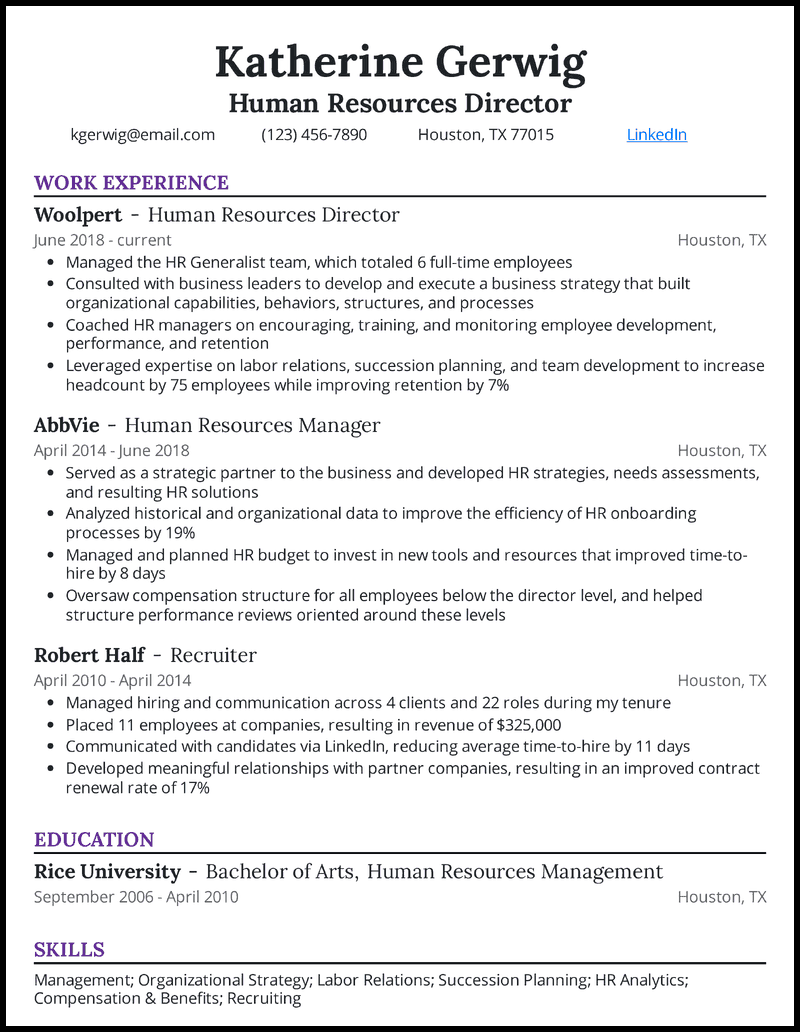
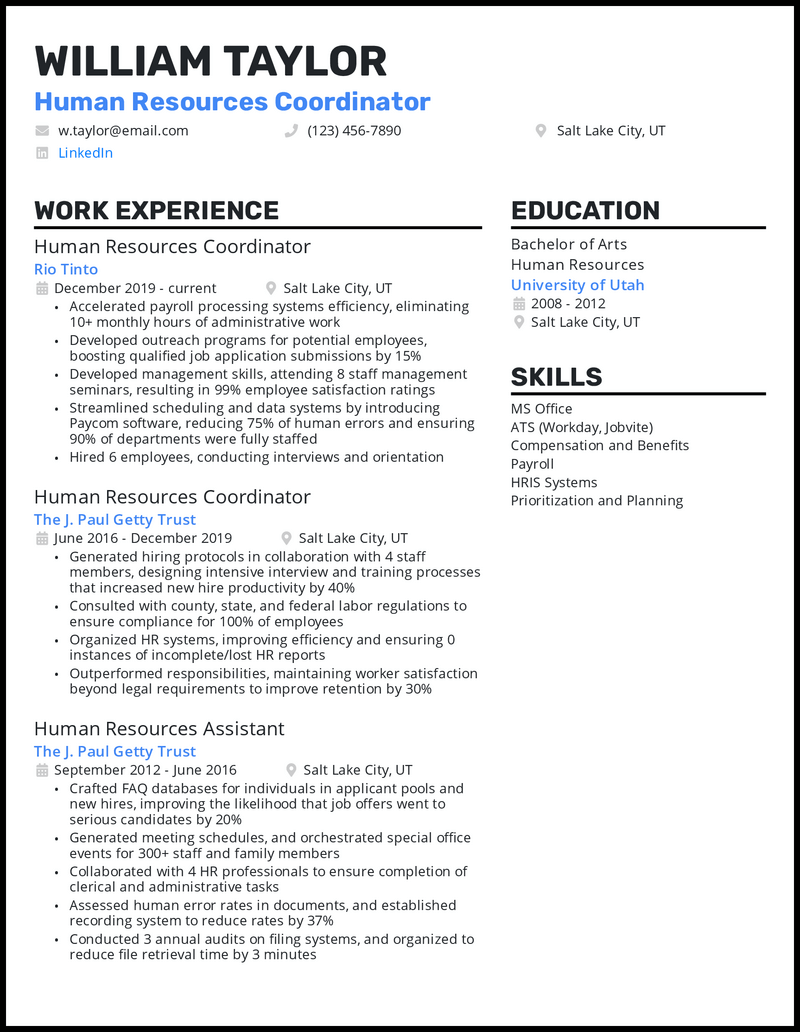
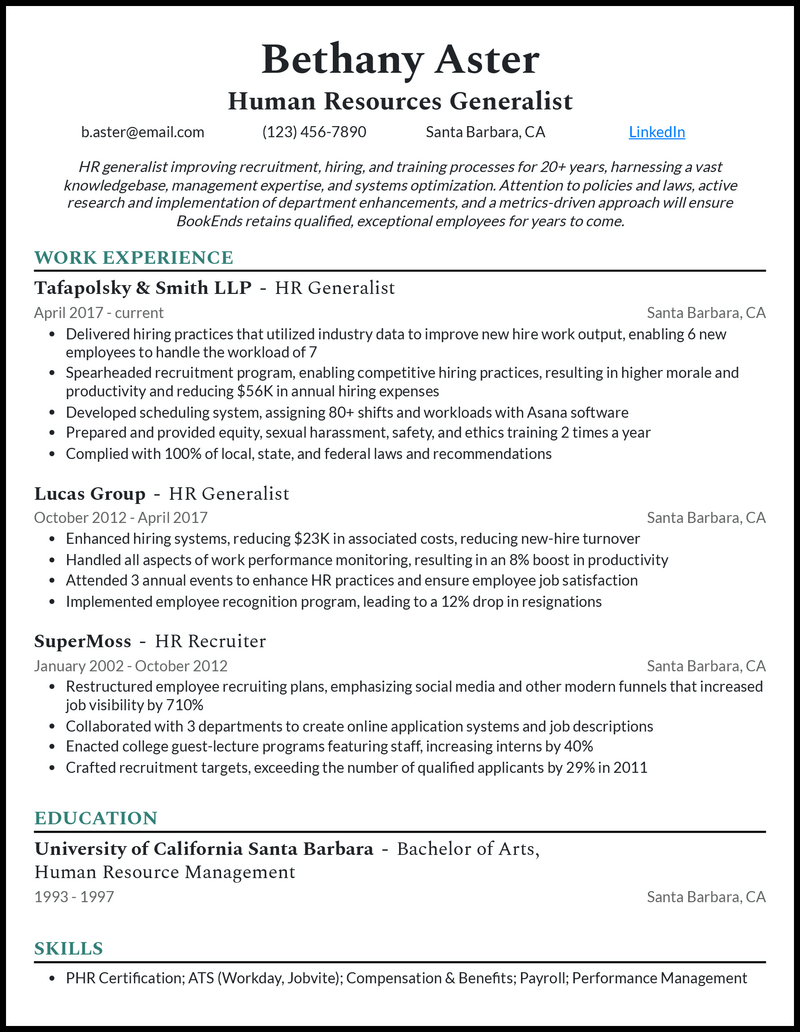
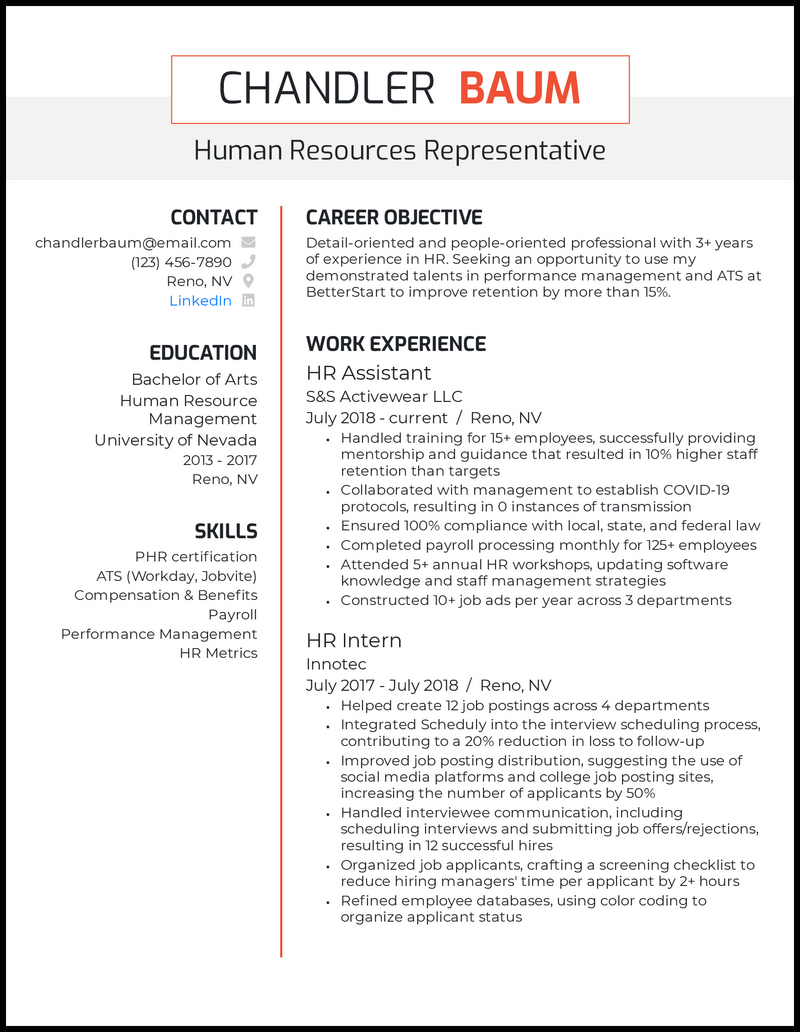
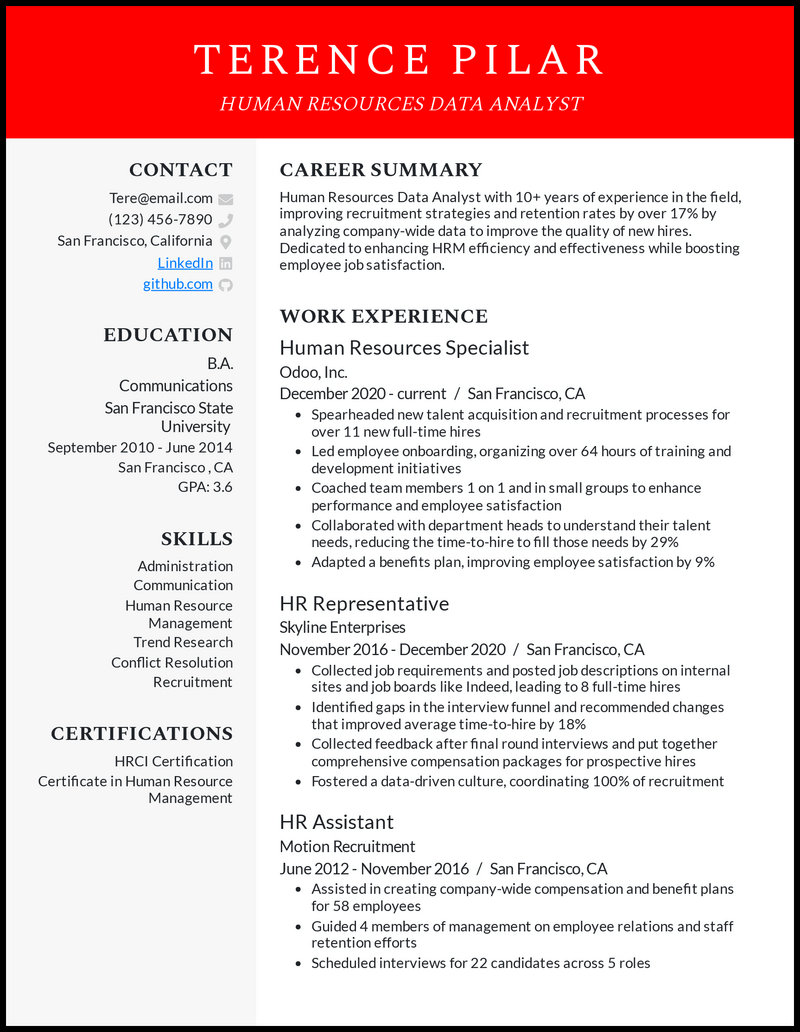
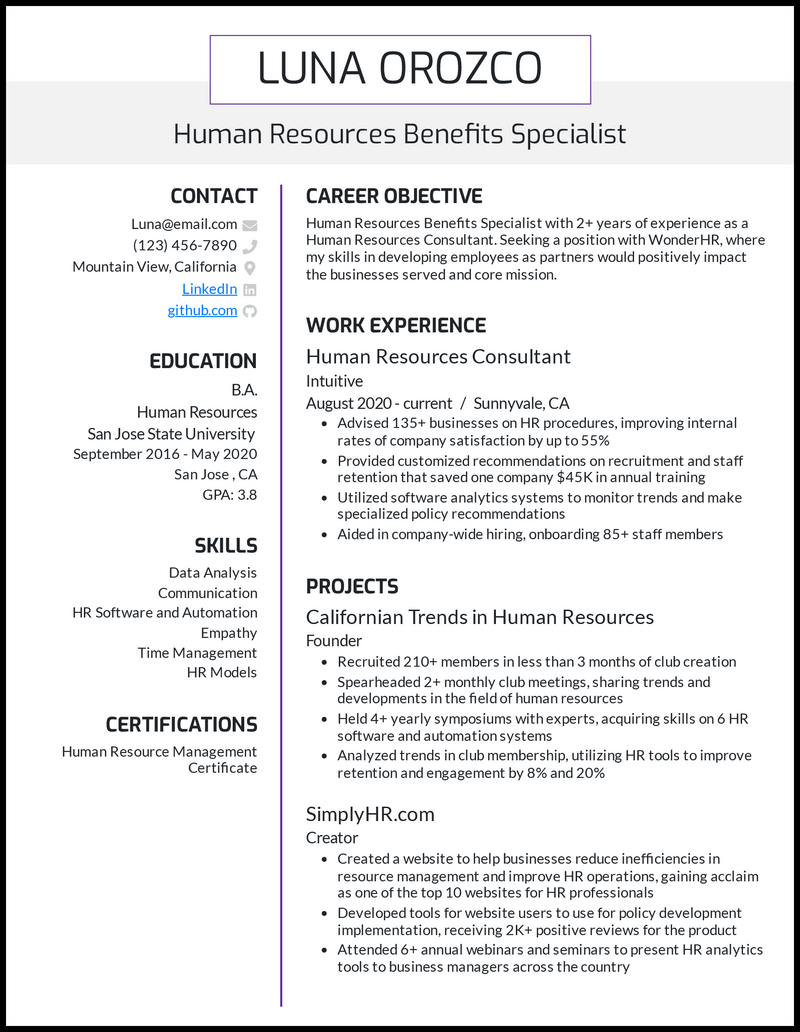
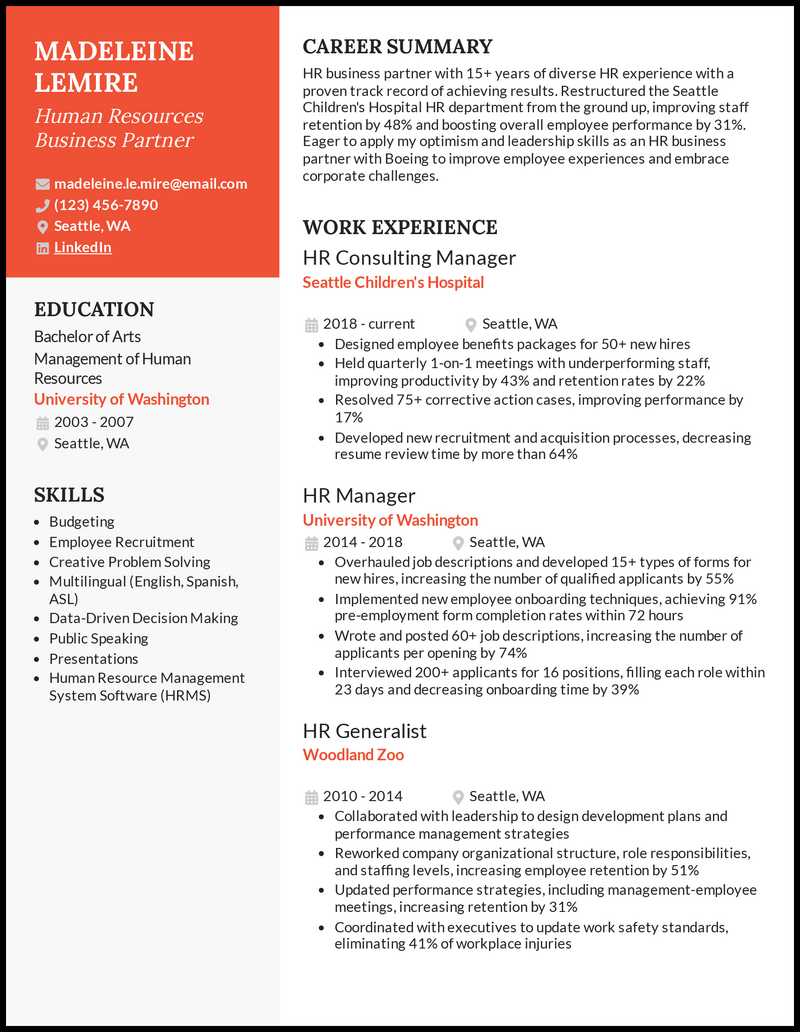
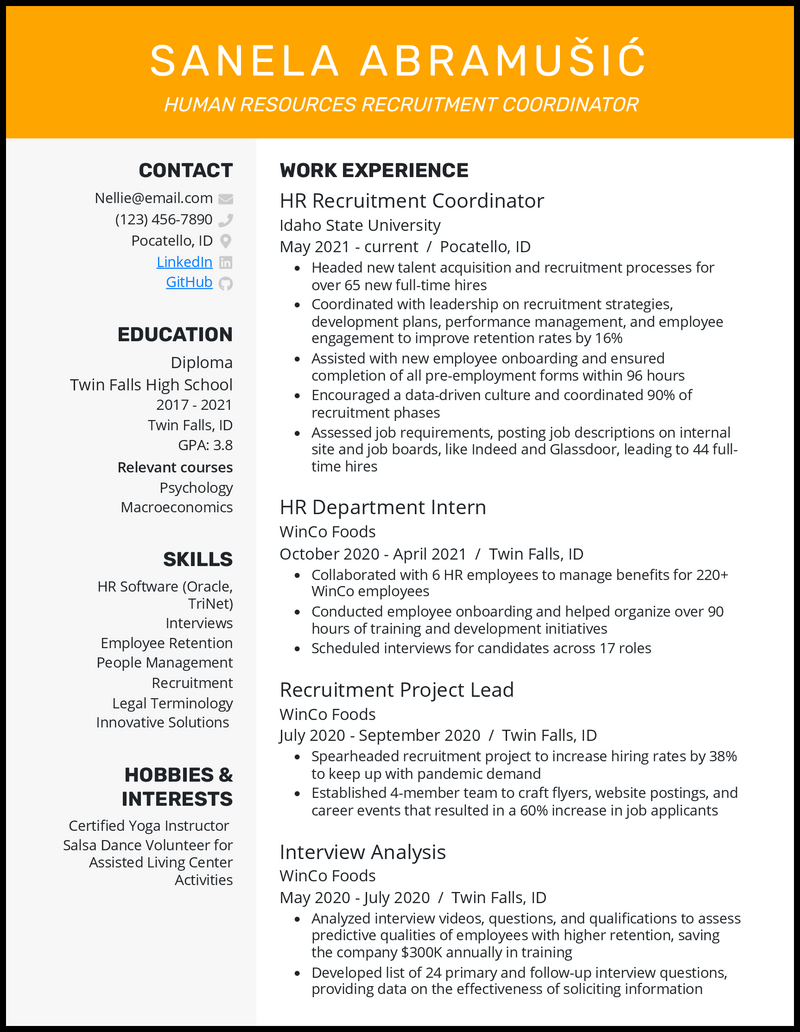
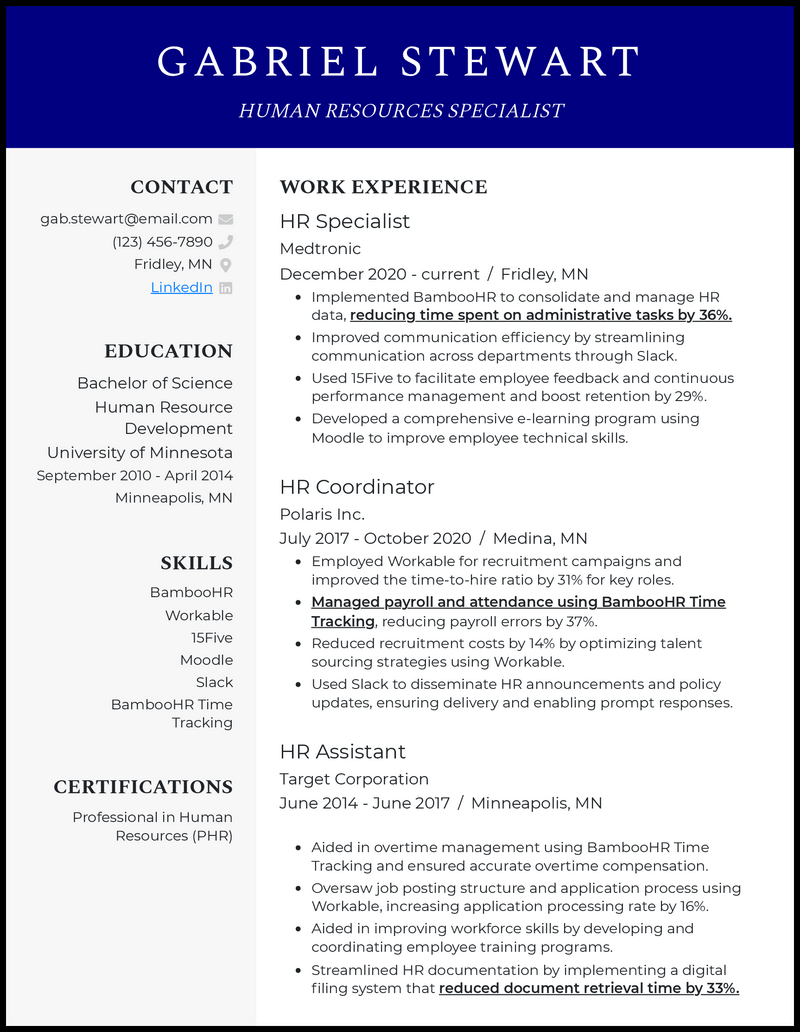
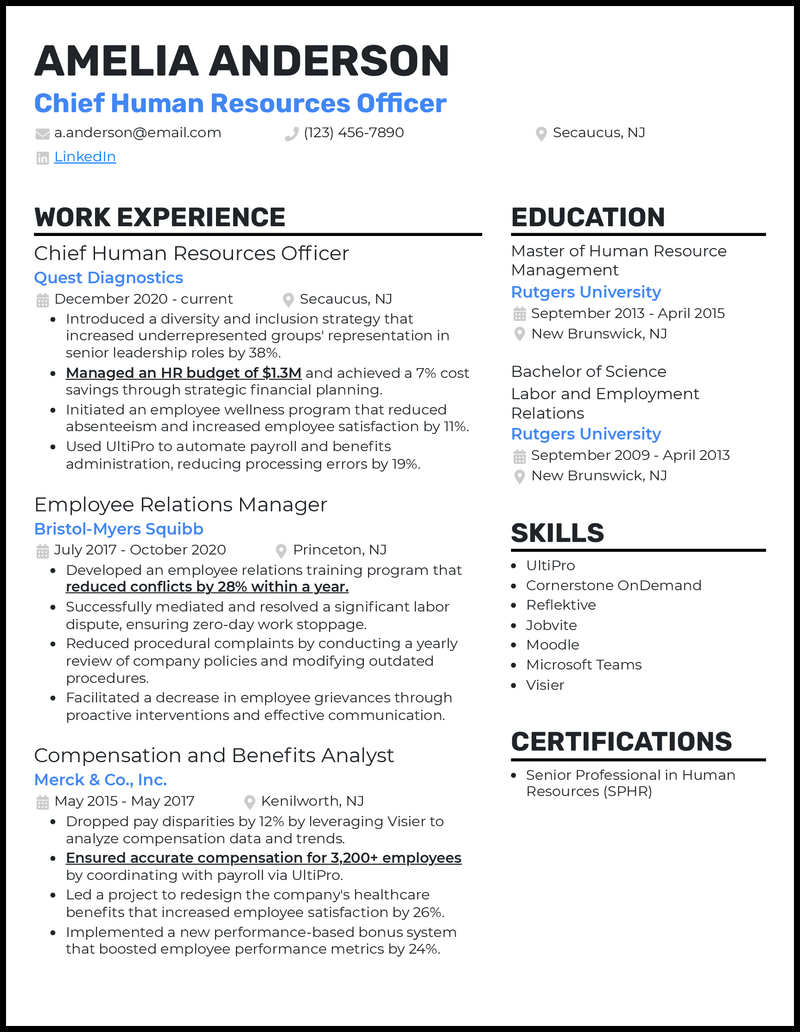
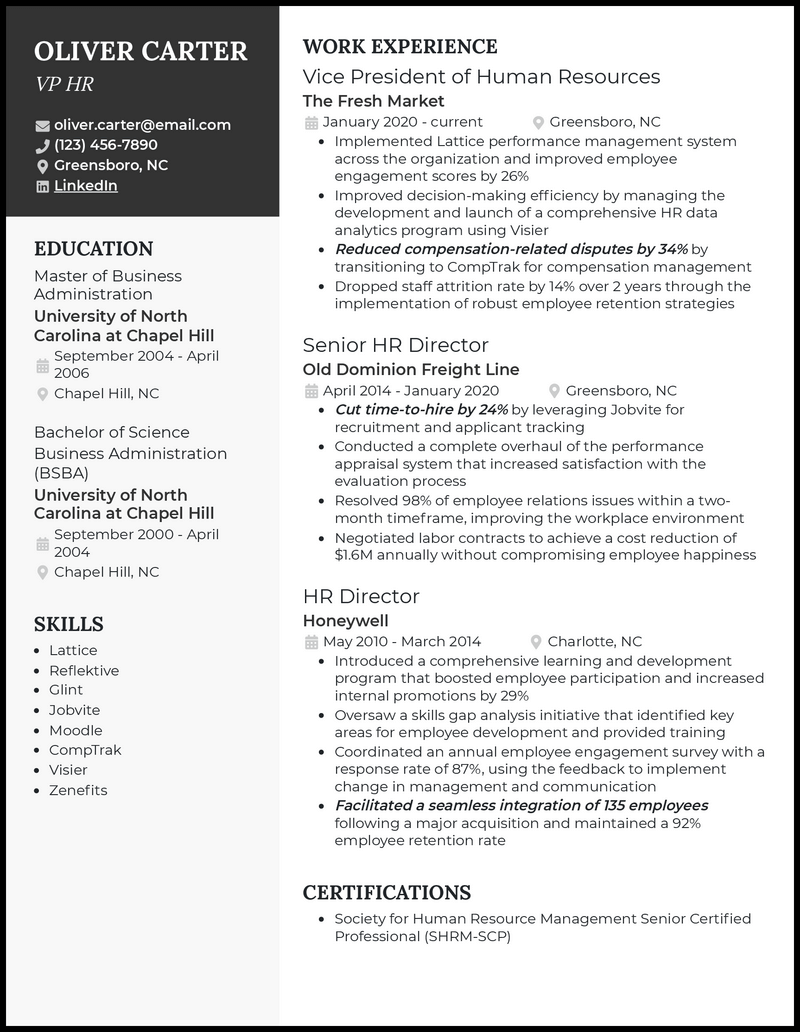

You could be an employer’s dream candidate, but you won’t be hired if your resume isn’t readable or logical. So before your professional resignation letter hits your current employer’s desk, walk through our guide on the top resume formats, what to include in your contact header, and how to make your HR resume readable for employers and ATS.
![]()
The top three resume formats for 2024 are reverse-chronological, functional, and combination/hybrid. Each format showcases your aptitude for the job in different ways.
We believe the reverse-chronological format, as shown below, is the best choice for a human resources resume because it’s easy for ATS and recruiters to read quickly and tells a consistent, steady of your career.

![]()
Your contact header is where you list (surprise, surprise) your contact information. In this section, you’ll want to include the following:
Since your contact header is the first thing recruiters will read, you need to design it carefully. Place your contact header at the top of your resume, either centered or left-aligned, to make it easy to spot. If you’re struggling to fit everything, remove the optional elements or go down a font size. Just make sure it’s no smaller than your resume body text.
You should also adjust the color, font style, and layout. Giving your name a different font and a color block outline can showcase your personality and desired role. No matter what you do with your contact header, just ensure it’s easy to read and looks professionally appealing.
Our resume examples can offer inspiration if you’re struggling to format your contact header.
Make your HR resume readable for software and people
HR professionals know the hiring process is complex, so ATS can be a lifesaver when used well. That means that when you write your HR resume, keep ATS in mind to avoid getting the boot.
![]()
Writing an effective resume is an overwhelming process, but human resource professionals can get it done in no time by writing only a section at a time.
![]()
Many people will argue that a resume objective or summary is a waste of space that’s “me-centric.” Yet, a worthwhile objective or summary can showcase your qualifications and give a snapshot of how you can impact a business.
Good objectives and summaries tell the recruiter why you should be hired in three sentences or less. They should highlight your skills while expressing how you’ll use your unique experience in the role for which you’re applying.
Objectives are typically used when you’re changing careers or just starting out, and they focus on your strengths and transferable skills. Summaries are used for those who have been in their career field for some time, and they function as a snapshot of your long-standing career.
You may not need a summary or an objective, but if you do choose one, always tailor it to each job for which you apply.
For example, generic objectives give nothing more than buzzwords like this:
This doesn’t tell the recruiter anything about the candidate’s unique experience (or anything about the candidate at all). A good objective is specific and personable, like this example:
Similar to the example above, notice how this savvy candidate tailors the career objective to the target business.

Summaries are excellent tools if you’re further along in your career. If you’re SHRM-SCP certified or have been in management for years, you should use a summary for your resume. Summaries can be difficult, though, because you have to cram in years of experience, often resulting in something that looks like this:
It’s not bad per se, but it’s vague and not tailored to the company. The one below gives examples of the applicant’s skills and what they’ll provide for their employer:
Like the visual below, the above summary explains goals, specialties, and what the candidate can do for their future employer. When writing your objective or summary, make sure it’s detailed and concise to showcase your best qualities.

![]()
HR professionals wear a lot of hats, so it can be tempting to cram in as many past jobs as you can to showcase your adaptability and skills. This results in a resume that’s overloaded without a clear focus.
Instead, list two to four of your most relevant job experiences. Doing so provides a clear story of your career and gives you room to expand on the responsibilities and skills you obtained from each position.
If you lack formal job experience, list internships, volunteer/leadership work, and projects related to your desired HR position.
![]()
Bullet points are the bread and butter of your experience section, so your writing should be as specialized as possible in this area. Use active verbs and targeted language without resorting to personal pronouns to create the most impact. Consistency is key, so match your verb tenses and either use punctuation or avoid it altogether.
Excellent bullet points for an HR resume are distinct and concise. Use the following examples to help you craft amazing bullet points on your resume:
These bullet points showcase your specialized skills and highlight your accomplishments most effectively and efficiently.
![]()
Metrics are frequently missed in HR resumes, but they’re a huge asset. They’re definitive proof that you’ve done your job well. So, you should aim to include metrics on 50 percent of your job description bullet points.
When discussing your job responsibilities, try to include some of the following HR metrics:
Below are some sample job description bullet points using the above metric types.
![]()
The skills section on an HR resume presents your attributes and qualifications in an easy way to read. Regardless of your experience, this section showcases why you’re the best candidate for the job because you possess the traits and knowledge the employer is seeking.
This is why ATS prioritizes skill keywords to weed out candidates, so nailing this section is crucial. To ensure you stay on the recruiter’s list, choose skills that appear in the job description or those related to similar HR positions.
These resume skills show experience in multiple areas, like recruiting and payroll, while also listing some hard skills like ATS knowledge.
![]()
As displayed in the visual below, you’ll need to include education, as most HR positions require a BA in Human Resources Management or associated degrees. Depending on your education level, years in the workforce, and any specializations and certifications, you may need to include different sections on your resume.
For example, if you have multiple certifications, it may not be wise to crowd them all in your objective/summary. Instead, list them in your skills section.
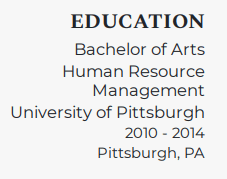
You may wonder if you should add a hobbies and interests section to your resume, but most HR resumes shouldn’t include these. Interests and hobbies can be useful in tipping the scale in your favor, but most often, they don’t increase your chances significantly.
However, if the job description or ad mentions company culture or the importance of interests, you should include an interests and hobbies section. For example, if you apply for an entertainment company position, including your love of Harry Potter and Star Wars might be beneficial.
![]()
Every job is different, so each resume you submit should also be unique. Human resources jobs will have things in common, so you don’t need to revamp your resume completely. Still, pay attention to the differences with each position. Tailor your objective/summary, your skills, and your work experience bullet points to match the job description or ad for every job to which you’ve applied.
![]()
Although it’s tempting, don’t submit your resume right away! Even though it’s technically complete, there could be mistakes you’ve overlooked.
Walk away for a day or two and let others read it. Once you’ve refreshed your mind, come back and check your resume one last time for any errors. Then make the necessary changes until your HR resume is spotless.
![]()
The last step is to celebrate and prepare for your interview! You can use our resume checker to upload your resume and check it against our AI-powered tips or use our free resume maker, which allows you to create resumes from scratch. Just remember, whenever you apply for a job, you’ll want to tailor your resume again. Good luck—we’re rooting for you!